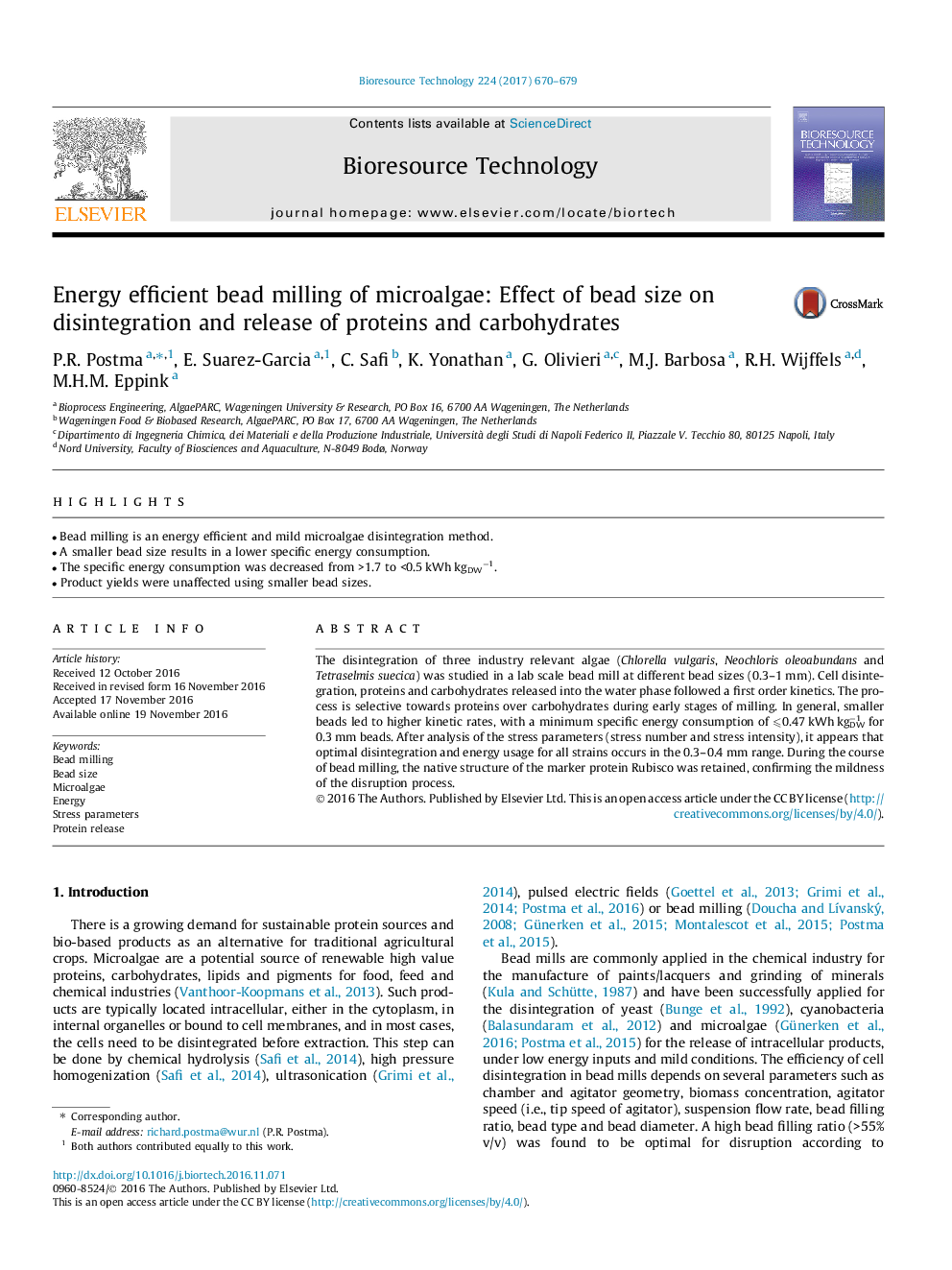| Article ID | Journal | Published Year | Pages | File Type |
|---|---|---|---|---|
| 4997890 | Bioresource Technology | 2017 | 10 Pages |
â¢Bead milling is an energy efficient and mild microalgae disintegration method.â¢A smaller bead size results in a lower specific energy consumption.â¢The specific energy consumption was decreased from >1.7 to <0.5 kWh kgDWâ1.â¢Product yields were unaffected using smaller bead sizes.
The disintegration of three industry relevant algae (Chlorella vulgaris, Neochloris oleoabundans and Tetraselmis suecica) was studied in a lab scale bead mill at different bead sizes (0.3-1 mm). Cell disintegration, proteins and carbohydrates released into the water phase followed a first order kinetics. The process is selective towards proteins over carbohydrates during early stages of milling. In general, smaller beads led to higher kinetic rates, with a minimum specific energy consumption of ⩽0.47 kWh kgDWâ1 for 0.3 mm beads. After analysis of the stress parameters (stress number and stress intensity), it appears that optimal disintegration and energy usage for all strains occurs in the 0.3-0.4 mm range. During the course of bead milling, the native structure of the marker protein Rubisco was retained, confirming the mildness of the disruption process.
